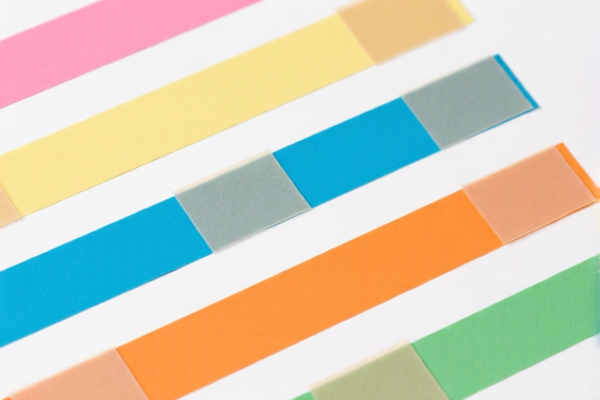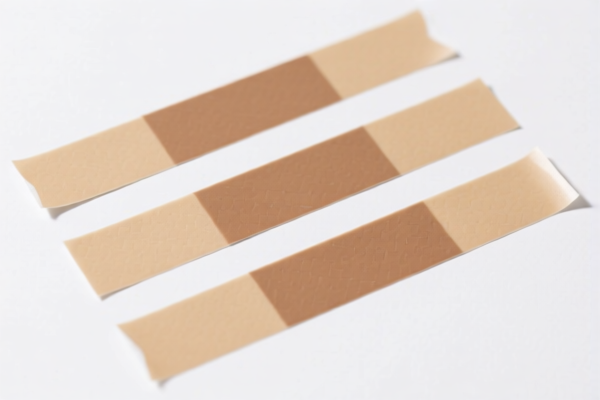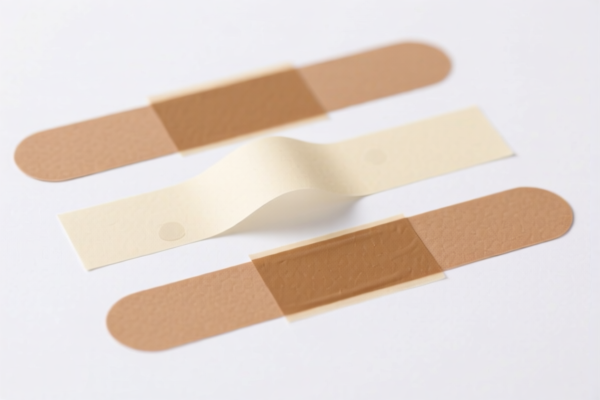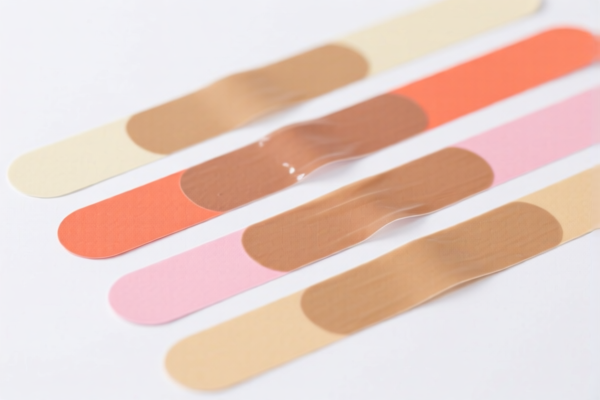| HS Code | Official Doc | Tariff Rate | Origin | Destination | Effective Date |
|---|---|---|---|---|---|
| 3919101010 | Doc | 61.5% | CN | US | 2025-05-12 |
| 3919102055 | Doc | 60.8% | CN | US | 2025-05-12 |
| 3926904000 | Doc | 32.8% | CN | US | 2025-05-12 |
| 4016990300 | Doc | 58.0% | CN | US | 2025-05-12 |
| 4016990500 | Doc | 40.9% | CN | US | 2025-05-12 |
| 4005910000 | Doc | 55.0% | CN | US | 2025-05-12 |
| 4005990000 | Doc | 55.0% | CN | US | 2025-05-12 |
| 5609001000 | Doc | 57.9% | CN | US | 2025-05-12 |
| 5609004000 | Doc | 58.9% | CN | US | 2025-05-12 |
| 5404198080 | Doc | 61.9% | CN | US | 2025-05-12 |
| 5404900000 | Doc | 55.0% | CN | US | 2025-05-12 |
| 5604909000 | Doc | 60.0% | CN | US | 2025-05-12 |
| 7317005505 | Doc | 80.0% | CN | US | 2025-05-12 |
| 7317005508 | Doc | 80.0% | CN | US | 2025-05-12 |
| 8305906000 | Doc | 43.2% | CN | US | 2025-05-12 |




Adhesive Strip
An adhesive strip is a narrow piece of material coated with a pressure-sensitive adhesive, used for temporarily fastening objects together or covering wounds.
Material
Adhesive strips are typically composed of a backing material and an adhesive layer.
- Backing Material: Commonly made of fabrics like cotton, rayon, polyester, or plastics such as polyethylene, polypropylene, or polyvinyl chloride (PVC). The backing provides strength and flexibility. Some specialized strips utilize breathable materials like non-woven fabrics.
- Adhesive: Most commonly utilize acrylic-based adhesives, known for their good adhesion, resistance to UV light, and aging properties. Rubber-based adhesives are also used, offering strong initial tack. Medical-grade adhesive strips employ hypoallergenic adhesives designed to minimize skin irritation. Silicone adhesives are used for specialized applications requiring gentle adhesion and repositionability.
Purpose
The primary purposes of adhesive strips are:
- Wound Care: Covering and protecting minor cuts, scrapes, blisters, and abrasions.
- Fastening: Temporarily holding objects together during assembly, repair, or crafting.
- Securing: Holding dressings, bandages, or tubing in place.
- Protection: Shielding skin from friction or contamination.
Function
Adhesive strips function through adhesion, a physical phenomenon resulting from intermolecular forces between the adhesive and the surfaces being joined.
- Pressure-sensitive adhesion relies on the adhesive's ability to conform to surface irregularities and create a strong bond upon contact.
- The adhesive layer forms a physical bond without requiring heat, solvents, or mechanical fasteners.
- Strength of adhesion is influenced by factors such as surface cleanliness, pressure applied, contact area, and adhesive properties.
Usage Scenarios
- First Aid: Applying to minor wounds to prevent infection and promote healing.
- Household Repairs: Securing loose items, temporarily fixing broken objects.
- Crafting and DIY Projects: Holding materials together during glue drying or assembly.
- Medical Procedures: Securing IV lines, catheters, or dressings.
- Industrial Applications: Holding components during manufacturing or assembly processes.
- Cosmetics: Applying false eyelashes or securing skin during facial treatments.
Common Types
- Fabric Bandages: Traditional wound care strips, often with a cotton or rayon backing and a pad for absorption.
- Clear Bandages: Transparent strips for discreet wound covering.
- Waterproof Bandages: Designed to maintain adhesion in wet environments.
- Blister Bandages: Cushioned strips specifically for protecting blisters.
- Surgical Tape: Stronger adhesive strips used for securing surgical dressings.
- Medical Tape: Variety of hypoallergenic tapes for various medical applications.
- Double-Sided Tape: Adhesive on both sides for mounting or joining objects.
- Electrical Tape: Insulating tape used for repairing or insulating electrical wires.
- Duct Tape: Heavy-duty, water-resistant tape for a wide range of repairs.
- Masking Tape: Low-tack tape for painting or temporary protection.
- Mounting Tape: Designed for securely attaching objects to surfaces.
Adhesive strip can fall under several classifications depending on its composition and specific characteristics. Here's a breakdown of potential HS codes based on the provided information:
-
3919.10.10.10: This code covers self-adhesive plates, sheets, film, foil, tape, and strips of plastics, whether or not in rolls, specifically those in rolls of a width not exceeding 20 cm and having a light-reflecting surface produced in whole or in part by glass grains (ballotini). This is specifically for pavement marking tape.
- 39: Plastics and articles thereof.
- 19: Self-adhesive plates, sheets, film, foil, tape, strip and other flat shapes, of plastics.
- 10: In rolls of a width not exceeding 20 cm.
- 10: Having a light-reflecting surface produced in whole or in part by glass grains (ballotini) Pavement marking tape.
-
3919.10.20.55: This code also covers self-adhesive plates, sheets, film, foil, tape, and strips of plastics, whether or not in rolls, in rolls of a width not exceeding 20 cm, but categorized as "Other" when not having a light-reflecting surface produced by glass grains.
- 39: Plastics and articles thereof.
- 19: Self-adhesive plates, sheets, film, foil, tape, strip and other flat shapes, of plastics.
- 10: In rolls of a width not exceeding 20 cm.
- 20: Other.
- 55: Other.
-
4016.99.03.00: This code covers other articles of vulcanized rubber other than hard rubber, specifically containers (with or without closures) used for packing, transporting, or marketing merchandise. If the adhesive strip is used as part of packaging, this code might be applicable.
- 40: Rubber and articles thereof.
- 16: Other articles of vulcanized rubber other than hard rubber.
- 99: Other.
- 03: Containers, with or without their closures, of a kind used for the packing, transporting or marketing of merchandise.
-
8305.90.60.00: This code covers fittings for looseleaf binders or files, letter clips, letter corners, paper clips, indexing tags and similar office articles, and parts thereof, of base metal; staples in strips (for example, for offices, upholstery, packaging), of base metal. If the adhesive strip is used as a component in office supplies or packaging staples, this code might be relevant.
- 83: Miscellaneous manufactured articles.
- 05: Fittings for looseleaf binders or files, letter clips, letter corners, paper clips, indexing tags and similar office articles, and parts thereof, of base metal.
- 90: Other, including parts.
- 60: Other.
Regarding HS code 8305.90.60.00, please note that it covers staples in strips, and the reference material indicates it is for offices, upholstery, or packaging.
It is important to determine the exact composition (plastic vs. rubber) and intended use of the adhesive strip to select the most appropriate HS code.
Customer Reviews
No reviews yet.